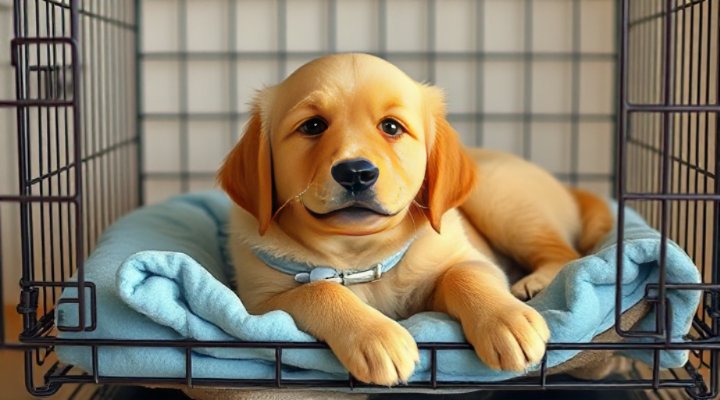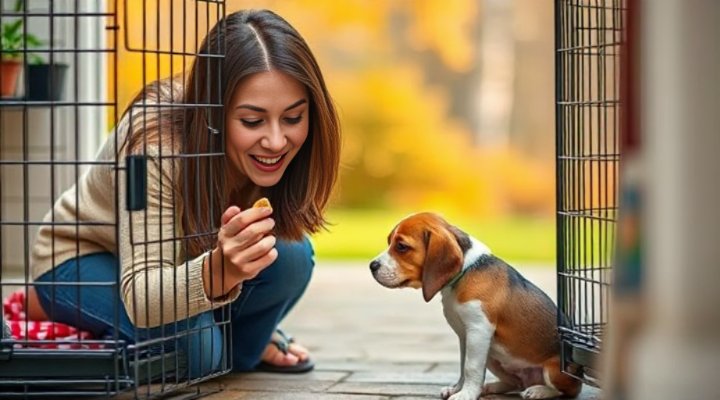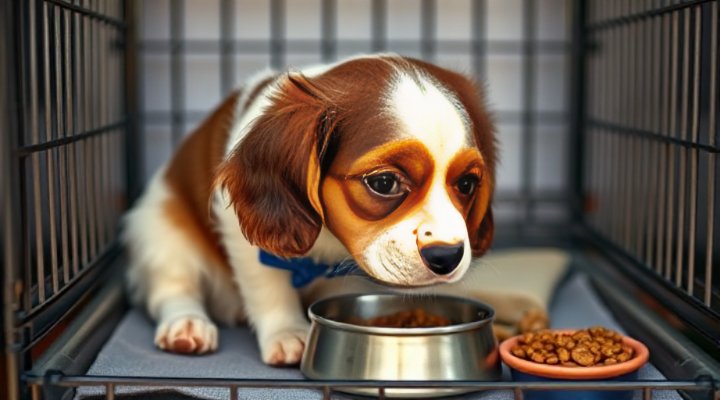Puppy and crate training is one of the most valuable skills you can teach your new furry family member. When done correctly, the crate becomes your puppy’s safe space – a cozy den where they can relax and feel secure. This comprehensive guide will walk you through every step of the process, from selecting the right crate to helping your puppy learn to love their new space.

Why Puppy and Crate Training Matters
Before we dive into the how-to, let’s explore why crate training is so beneficial. First and foremost, dogs are den animals by nature. In the wild, they seek out small, enclosed spaces for safety and comfort. A properly introduced crate taps into this instinct, providing your puppy with:
- A safe retreat when overwhelmed
- A designated sleeping area
- Protection from household hazards when unsupervised
- Help with housebreaking (dogs naturally avoid soiling their den)
According to the American Veterinary Society of Animal Behavior, crate training done properly can significantly reduce separation anxiety in dogs. That said, it’s crucial to approach crate training with patience and positive reinforcement.

Choosing the Right Crate for Puppy Training
The first step in successful puppy and crate training is selecting the appropriate crate. There are several types to consider:
Wire Crates
These provide excellent ventilation and visibility. Many are collapsible for easy transport, making them ideal if you travel frequently with your pup. Our article on choosing the best crate offers more detailed recommendations.
Plastic Crates
These create a more den-like atmosphere and are often preferred by airlines for transport. They tend to be more enclosed, which some puppies find comforting.
Soft-Sided Crates
Best for older, already crate-trained dogs, these lightweight options work well for car travel or temporary confinement.
Regardless of type, ensure the crate is just large enough for your puppy to stand up, turn around, and lie down comfortably. If it’s too big, they might use one end as a bathroom. Many wire crates come with dividers so you can adjust the space as your puppy grows.

Step-by-Step Puppy and Crate Training Process
Now, let’s walk through the actual training process. Remember, every puppy learns at their own pace – what takes one dog three days might take another three weeks. The key is consistency and patience.
Step 1: Introduce the Crate Positively
Start by placing the crate in a busy area of your home where your puppy spends time. Leave the door open and scatter treats inside to encourage exploration. You might place your puppy’s meals near the crate initially, then gradually move the bowl inside. This creates positive associations from the start.
Step 2: Make It Comfortable
Add soft bedding and perhaps a piece of your clothing that carries your scent. Some puppies appreciate a blanket draped over part of the crate to make it feel more den-like. Avoid using the crate for punishment – it should always be associated with positive experiences.
Step 3: Begin Short Sessions
Once your puppy enters voluntarily, start closing the door for brief periods while you’re present. Toss treats inside and praise calm behavior. Gradually increase the duration with the door closed, always staying nearby at first.
For more detailed training techniques, check out our puppy training tips article.

Step 4: Practice Departures
After your puppy is comfortable with you nearby, begin stepping away for short periods. Start with just a few seconds, then gradually increase the time. Vary your departures so your puppy doesn’t associate specific actions (like picking up keys) with being left alone.
Step 5: Overnight Crating
Initially, place the crate in your bedroom so your puppy doesn’t feel isolated. As they adjust, you can gradually move it to its permanent location. Expect some whining at first – this is normal. Respond only when they’re quiet to avoid reinforcing the behavior.
Troubleshooting Common Crate Training Challenges
Even with the best approach, you might encounter some hurdles. Here’s how to handle common issues:
Whining or Barking
If your puppy cries in the crate, ensure their needs are met (they’re not hungry, thirsty, or need to eliminate). If all needs are met, wait for a pause in the whining before responding to avoid reinforcing the behavior.
Accidents in the Crate
This usually means the crate is too large, your puppy was left too long, or they weren’t properly exercised beforehand. Our guide on housebreaking puppies offers helpful tips.
Reluctance to Enter
Go back to basics with higher-value treats and shorter sessions. Some puppies respond well to feeding all meals in the crate with the door open at first.

Advanced Crate Training Tips
Once your puppy has mastered the basics, these strategies can enhance their crate experience:
- Rotate special crate-only toys to maintain interest
- Use a command like “kennel up” to signal crate time
- Practice crate time during the day even when you’re home
- Consider crate games to reinforce positive associations
The American Kennel Club recommends keeping crating sessions appropriate for your puppy’s age – a general guideline is one hour per month of age plus one (so a three-month-old puppy could handle about four hours).
When to Phase Out the Crate
While many dogs continue to enjoy their crates throughout life, you may choose to phase it out once your puppy is:
- Fully housebroken
- Not destructive when unsupervised
- Comfortable being left alone
Even then, keep the crate available as an optional safe space. Many adult dogs voluntarily retreat to their crates for naps or quiet time.
Final Thoughts on Puppy and Crate Training
Proper crate training requires patience and consistency, but the benefits are well worth the effort. A puppy who loves their crate has:
- Reduced anxiety when left alone
- A safe space during stressful situations (like thunderstorms)
- An easier time with travel or vet visits
- Better housebreaking results
Remember, the goal isn’t just confinement – it’s creating a positive association that makes the crate your puppy’s favorite retreat. With time and positive reinforcement, you’ll have a dog who willingly enters their “den” and rests contentedly when needed.
For more puppy training resources, explore our articles on comprehensive puppy training and positive reinforcement techniques.
Related Keywords: puppy crate training schedule, how long to crate train a puppy, best age to start crate training, crate training anxious puppy, crate training benefits

